When you purchase through links on our site, we may earn a commission at no additional cost to you. Learn More
ATV batteries are considered consumables that need to be replaced when they can no longer hold a sufficient charge. But how many years of service life should you expect from your new battery? I did some research to find out.
So How long does an ATV battery last? ATV batteries last 3-5 years on average but can last longer if properly maintained. A battery left sitting for long periods without being maintenance charged will not last as long. Sealed batteries such as AGM batteries typically last about twice as long as a conventional lead-acid battery.
Continue reading to learn how you can make your ATV battery last longer and what may be the issue if your battery fails prematurely.
Many ATV owners wonder why their batteries do not last as long as they’d expect.
The actual life expectancy of your ATV battery is affected by a wide range of factors. Some of which you can affect, while others are external factors you just have to live with.
Most of these factors will have a bigger effect on conventional flooded lead-acid batteries than sealed batteries like an AGM battery.
All types of batteries work best in room temperatures ( 20°C (68°F) or slightly below). Both warmer and colder climates will negatively affect battery life.
Some types of batteries handle high or low temperatures better than others. Conventional lead-acid batteries like extreme temperatures the worst.
Inside a conventional lead-acid battery, lead plates and electrolyte fluid produce a charge through an electrochemical reaction. High temperatures make this reaction go faster, while low temperatures slow it down. Both may negatively affect the life expectancy of the battery.
Cold temperatures:
Moderate sub-zero temperatures will not cause damage to a fully charged battery that is not being used. But when you use a battery when it is cold, it will indirectly cause excessive stress that will reduce your battery’s life expectancy.
But when you use a battery when it is cold, it will indirectly cause excessive stress that will reduce your battery’s life expectancy.
 Failing to fully charge the battery before storage or having a parasitic draw that is slowly draining the battery while it’s sitting may permanently reduce the battery’s life.
Failing to fully charge the battery before storage or having a parasitic draw that is slowly draining the battery while it’s sitting may permanently reduce the battery’s life.Warm temperatures:
Batteries have a better chance of lasting if they are being used frequently. Each time you ride, the ATVs own charging system will top off the battery with a fresh charge, making the state of charge stays within healthy levels.
Each time you ride, the ATVs own charging system will top off the battery with a fresh charge, making the state of charge stays within healthy levels.
If you only use the ATV now and then, chances are the battery will be neglected when the bike is sitting. Maintaining a periodic charging routine even when the ATV is not being used is the best way to ensure optimal battery life.
All ATVs have a built-in charging system that charges the battery each time you ride. They are, however, not all equally efficient.
Older ATVs typically have a lower output charging system than newer models. Accessories like EPS (electric power steering), heated grips, and electric winches draw a lot of power from the battery.
If the provided charge is too low, or if the system for some reason is not working properly, it may not be able to keep the battery fully charged, thus reducing its service life.
Overcharging a lead-acid battery will cause the battery acid (electrolyte water) to evaporate.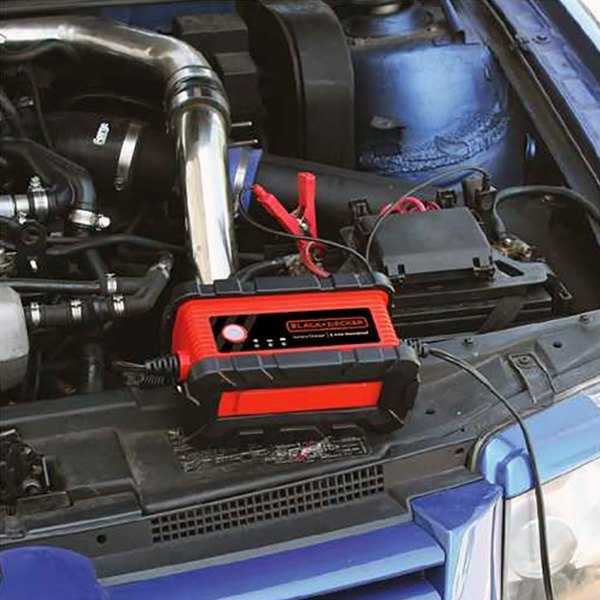 The electrolyte may gradually evaporate over time as well.
The electrolyte may gradually evaporate over time as well.
When levels drop too low, the lead plates get exposed to air, making them corrode quickly. Corrosion may cause an internal short, leaving the battery useless.
Serviceable lead-acid batteries have removable caps that allow you to add distilled water if needed. Make sure electrolyte levels stay within the required range at all times. The lead plates should be fully covered but do not overfill.
Sealed AGM or GEL batteries do not have a problem with evaporation, as long as you use a quality smart charger (link to Amazon).
If you leave the lights on, or if something else is draining your battery overnight, you need to charge the battery as soon as you can. If you charge the battery the next day, you should recover the battery to a full charge with minimal damage.
Make sure you don’t let the battery drain completely too often as this will shorten its overall service life.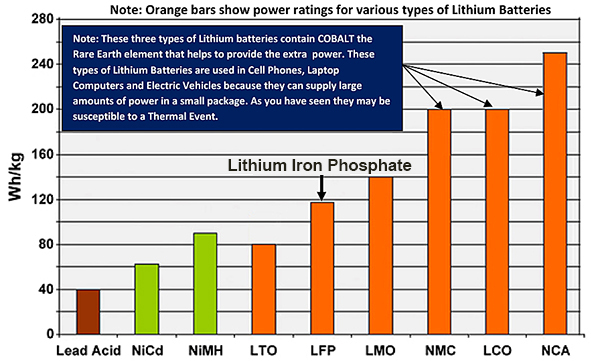
Sulfation is a build-up of crystals on the lead plates inside a lead-acid battery. The battery’s ability to take and hold a charge gets reduced as more and more sulfation builds up until the battery goes dead.
You cannot prevent sulfation entirely, but you can keep it minimum by charging the battery properly.
Sulfation builds up faster when:
Some types of ATV batteries do not last as long as others.
Conventional flooded lead-acid ATV batteries typically last 2 to 3 years on average.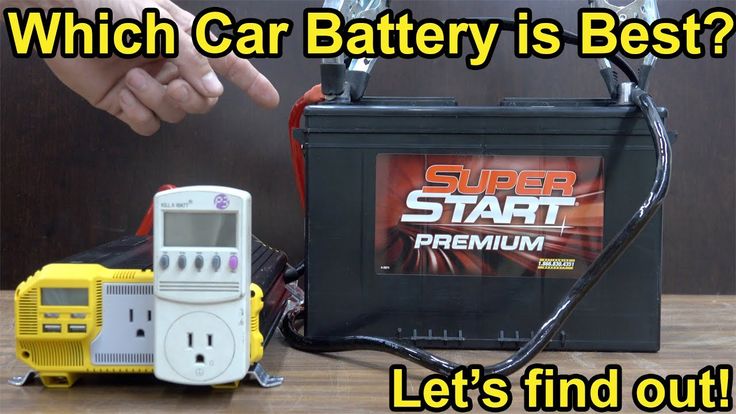 They may last as long as 4 to 5 years if properly maintained and used under optimal conditions.
They may last as long as 4 to 5 years if properly maintained and used under optimal conditions.
They do not last as long as a sealed battery because they do not cope as well with factors such as those listed above.
Flooded lead-acid batteries have a relatively high discharge rate. In one month, it will lose about 13% of its charge.
AGM (absorbed glass mat) batteries are the most common type of batteries used in ATVs today. Longer battery life is one of the reasons why they are preferred over conventional flooded lead-acid batteries.
An AGM ATV battery will typically last 3 to 5 years on average. They may last as long as 6 to 8 years when properly maintained.
AGM batteries do usually not go completely dead all of a sudden. Instead, they will gradually lose capacity and require more charging. When this happens, it is time to get a new battery.
AGM batteries have a low discharge rate. In one month, it will lose only 1-3% of its charge.
Lithium-ion batteries are not as common in ATVs as AGM and lead-acid batteries. Mostly due to a high cost and less than optimal performance in cold weather.
Lithium-Ion ATV batteries will typically last 2 – 5 times as long as a conventional lead-acid ATV battery.

Related: How to Charge Any ATV or UTV Battery – All You Must Know
https://www.yuasabatteries.com/resources/faqs/
https://batteryuniversity.com/learn/article/discharging_at_high_and_low_temperatures
https://www.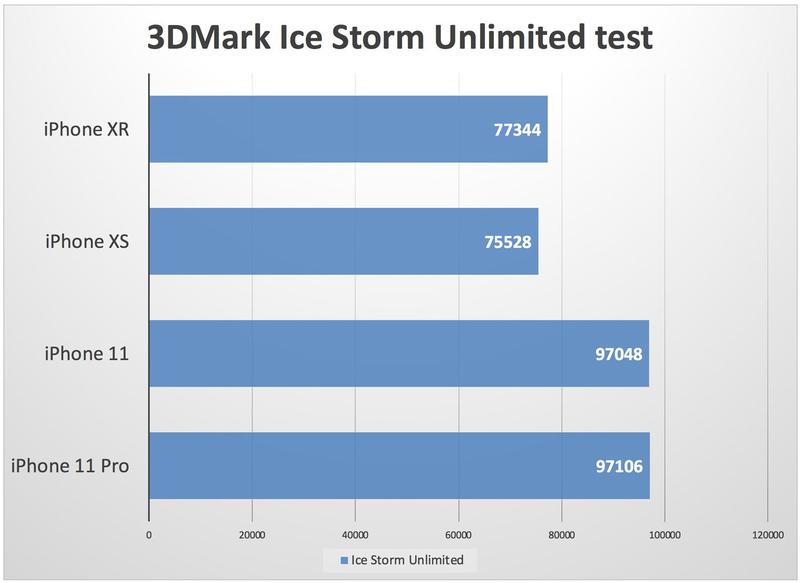 eastpennmanufacturing.com/resources-downloads/faqs/
eastpennmanufacturing.com/resources-downloads/faqs/
Battery technology has improved over the last few years. But still, ATV batteries are expensive. There’s a few things you can do though to keep your battery running as long as possible to help you get the most bang for your buck.
Under normal conditions, an ATV battery will typically last for about 3-4 years. With proper maintenance and care, you could see an ATV battery last for more than 5 years. If your battery is lasting less than 2 years, you may have an electrical problem or your not maintaining the battery properly.
The quality of battery you use will also play a big role in how long it will last you. If you try saving a few bucks by getting a cheap battery, it might end up costing you more in the long run because you’ll end up replacing it sooner.
Most ATV batteries you find are lead-acid batteries, whether it has battery acid or AGM, they are still lead-acid batteries. The older battery is made up of plates surrounded by battery acid to help carry a charge. The newer battery types (AGM), have fiberglass surrounding the plates.
The older battery is made up of plates surrounded by battery acid to help carry a charge. The newer battery types (AGM), have fiberglass surrounding the plates.
The absorbed glass mat (AGM) batteries have battery acid still, it is just abosrbed into the fiberglass material. There’s less to deal with because you don’t need to worry about changing and refilling the battery acid constantly, but they do need to be charged and maintained just the same.
If you go to your local parts store, or an ATV dealer, you might notice they charge around 100 bucks for a new battery. Let me tell you now, the ones you can get online are just as good of quality for way cheaper than that.
Now I’m not saying go out and get the 20 dollar knock off battery, but if you look around you can find a good deal on a decent battery. I recommend starting your search with this Weize YTX14 BS ATV Battery High Performance from Amazon.
If you live somewhere that is very cold for most of the year, you’ll want to look for a Cold Weather Gel Battery instead. These are the go to options for cold weather starting, you will probably also need a battery warmer, unless you can keep your quad stored in a temperature controlled garage when not in use. I talk more about battery temperature later on in this article.
These are the go to options for cold weather starting, you will probably also need a battery warmer, unless you can keep your quad stored in a temperature controlled garage when not in use. I talk more about battery temperature later on in this article.
One of the main reasons an ATV battery will stop working is because the terminals have gotten corroded. You may see gunk start to build up on the terminals of the battery where the leads are connected.
After a while this build up can prevent a good connection with the wires to the terminals. If that’s the case, the ATV won’t be getting power and won’t start up. It can also reduce the life of the battery if these terminals aren’t cleaned and kept in good working order.
To clean the battery terminals, remove the leads connecting to them first. Use a wire brush to remove all the corrosion and build up around the terminals. A good battery cleaner will help with this part.
After you’ve cleaner the terminals and connections nice and thoroughly, apply a battery terminal protective solution to prolong the life of the battery.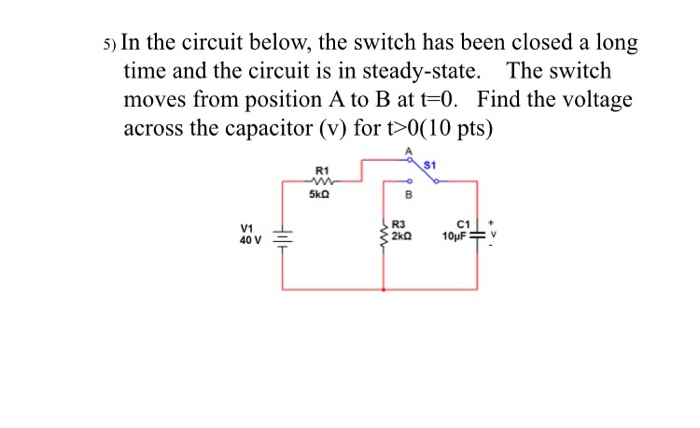 You can usually find this stuff online pretty cheap, or if you don’t have time to wait for shipping, a local auto-parts store usually carries it.
You can usually find this stuff online pretty cheap, or if you don’t have time to wait for shipping, a local auto-parts store usually carries it.
I use this Battery Cleaner with Acid Indicator and Terminal Protector Package from Amazon. I like the acid indicator feature the battery cleaner has. The cleaner will actually change color from yellow to pink if it comes in contact with battery acid. Your battery should not be leaking acid so if you see that happening, it’s time to replace your battery.
When your quad is running, the stator will do its job and keep the battery from draining. But when the engine is going to sit for anywhere past a couple weeks, you should be putting the battery on a charger to keep it topped off.
The constant drain and recharge of a battery will wear it out over time. If you don’t keep the battery charged, you’ll be lucky if it lasts you past two years. The more time the battery can spend on a full charge, the longer it will last.
I go into more detail about this in my article How To Charge An ATV Battery. But basically, you’ll need a good trickle charger to plug into whenever your not riding the ATV. It’s not a big deal if you don’t plug it in over night, but like I said, if it’s going to sit for more than a couple weeks, you should put it on a charger.
I use this Ctek Smart Charger from Amazon, and I’ve never had problems with it. I like this charger because it will charge the battery til full and switch over to maintain mode, where it keeps the battery topped off until you need it again.
Also, the cool thing about the Ctek charger is you can get this Ctek Comfort Indicator Connector that you can hook up to the battery and leave it connected. That way you can easily hook the charger up when you’re done riding without having to remove the seat or any battery covers to get to it.
This is only something to really worry about if you live in cold areas, or like to ride often during winter. Extreme heat is a problem too don’t get me wrong. Most batteries are only rated for charging or using in temperatures under 120 degrees Fahrenheit. So if you’ll be riding around in a 120 degree desert, maybe take it easy.
But the cold is a lot more likely to be the problem is most areas. A standard ATV battery is rated for charging and using as low as -4 degrees F. If you plan on riding in temperatures even close to that range, read my How To Prepare Your ATV For Winter Riding article.
I want to talk about battery temperature because it’s not just what the battery is rated for use. Sure your battery will work when it zero degrees, but the performance of the battery drops drastically the colder the temperature is.
The colder outside it is, the faster your battery will discharge. A battery can also drain power over time if it sits in cold weather for too long. Even if you don’t ride in the cold, letting the battery sit out in cold temps will diminish the battery life.
Your best bet is to take the battery inside to leave on a charger, or keep the ATV stored in a heated or temperature controlled garage. If you don’t like either of those options, you could always get a battery warmer.
You will need to plug it in, but if you can get the warmer under the battery or snuggly on one side of it, you won’t have to remove the battery to bring it inside on a cold winter night. You’ll just have have an extension cord nearby that you can plug the battery heater into.
I would have a look at this Zerostart Wolverine Silicon Pad Battery Heater from Amazon if you decide this is the route you want to take. Living in cold areas can make taking care of a battery a pain.
No one wants to have to take the battery out of their machine every single cold night throughout the winter. A battery warmer can help with that. Do not use a battery heater if the temperature is above 50 degrees F.
Sharing is caring!
Electric ATVs are rapidly gaining popularity due to their efficiency and environmental friendliness. But many riders still do not know how to charge an ATV on a battery. Improper charging reduces the battery life or the battery loses its capacity quickly. Therefore, let's figure out how to charge a children's ATV and consider the key recommendations of experts.
There are two ways to recharge the ATV battery. The first and easiest is to connect the charger to the appropriate connector. All electric cars and scooters are charged in a similar way, although not all quadrics have a similar socket.
If the ATV does not have a charging port, the rider will have to connect the battery directly to the charging station. To do this, you need:
It is important to note that lithium batteries have a charge control board. This means that after a full charge, the process stops. Although overcharging the battery is still not recommended.
Another important question many riders are wondering is how to charge an ATV battery with an in-car charger. Yes, such a procedure is possible, but you need to properly configure the charger. For recharging, you can only use devices with adjustable charging current and the ability to set its minimum level (0.5-0.7 A).
Important : The optimal current for charging the battery is 1/10 of the battery capacity (in Amps).
Each vehicle's user manual lists the optimum battery charging time. On average, this figure is 6-12 hours. The charging time depends on the generation of the battery, its capacity and the characteristics of the charger. Don't forget to charge the battery, though. If the battery has 30-40% capacity left, the recharging time should be reduced.
But what if you don't know how long to charge your ATV battery? In this case, you need to almost completely discharge the battery and charge it for 8 hours. After that, the battery should be installed on the quadric, and the charge level should be assessed. If the indicator shows 100%, next time you need to charge the battery for 6-7 hours. In this way, you can determine the optimal recharging time.
Also remember that overcharging is the main enemy of batteries. It is strongly not recommended to leave the battery connected to the network for 15-20 hours. This leads to a decrease in battery capacity and, accordingly, a decrease in the operating time of the quadric.
Knowing how long it takes to charge an ATV, you can make a schedule for recharging it. For example, the battery can be connected to the network in the evening or after each trip. You can also purchase a replacement battery, thereby increasing the riding time on the ATV.
The battery of any electrical equipment must be properly maintained. Violation of the recommendations may lead to a decrease in battery capacity or damage to it. To avoid such problems, it is recommended:
Separately, it is worth mentioning the "buildup" of the battery. Immediately after purchasing the equipment, you will need to fully charge and charge the ATV several times (2-3 times).
Most riders store their bikes before winter. And in order for the device to be ready for operation in the spring, it must be properly preserved. Preparing an electric quad bike for wintering is quite simple, you just need to find a warm and dry place to store the quad.
Another important conservation point is battery preparation. Before wintering you need:
Note : If you leave the quad battery in the cold, the battery will simply "leak" and stop working.
11/16/2020 8926
The ATV battery is one of the most important elements in its electrical system. Given the amount of additional equipment installed on the ATV (winches, additional lights, alarms, heating, etc.), the battery often does not charge to the end. And the owners do not pay due attention to this, which is why they change the battery every season. Believe me, with proper care, the battery can last 3 or more seasons. Let's pay attention to the rules for charging your ATV battery, consider errors and answer questions that arise when servicing the battery.
Warning. The conversation for the most part will be about serviced batteries. Maintenance free ones have no plugs (at the top of the battery) and only need a timely and full charge, and their owners may skip some of the points described below.
Can I use a car charger to charge an ATV battery?
It is possible, in the case when the charger has an adjustable charge current and it is possible to set the minimum current from 0. 5 to 0.7.A. There is a simple rule: one tenth of the battery capacity will be considered the normal current for charging (calculation should be made in Amperes). Of course, it is much easier and more correct to use special devices designed for low charging current. Complete with the charger always comes instructions for use, which contains the basic requirements and rules, do not neglect to read it.
Is noise and bubbling normal when charging?
Moderate boiling is normal. This is explained by the reaction in which the electrolyte enters with lead plates, in which the acid releases a certain amount of gas. It is worth worrying if the boiling is excessively strong - this indicates that the charge current has been exceeded.
Why does a new battery drain quickly?
What is sulfation?
Sulfation is the formation of lead sulfate (white matter) on the battery plates.
All old and failed batteries are subject to this phenomenon.
What affects the sulfation process?
How to avoid sulfation?
Monitor the condition of the ATV's electrical system at all times. The battery loses its charge significantly during engine start, and the charge must be replenished when driving, so monitor the health of the regulator and generator relays. When the ATV is not used for a long time, remove the battery and charge it with the charger at least once every 2 months. When the first signs of sulfation appear, charge the battery with low current for a long time (up to 2 or more days).
Amps / hours - what is the characteristic?
This is the unit in which the battery capacity is measured. For example, a fully charged battery with a capacity of 1 Ah should theoretically provide a current of 1 ampere for an hour.
How and why to monitor the electrolyte level?
The electrolyte is sulfuric acid diluted with water in the right proportion. During operation, water evaporates, and the proportion of sulfuric acid increases, which, in turn, adversely affects the health of the battery.
If the electrolyte level drops (each battery has a normal level mark), add distilled water (available from auto parts stores) to the mark.
How can I tell if the battery is charged?
A charged battery produces 12.8V. If your multimeter measures 12.5V or less, the battery needs to be charged.
Which terminal should be connected first when installing the battery on the ATV?
Always connect the positive terminal first. When connecting the wire to the terminal, a spark may occur, so all flammable liquids must be removed in advance. Always tighten the bolts on the terminals firmly to avoid short circuits. The terminals can be treated with a lubricant to prevent oxidation.
What happens if the polarity is reversed?
Always respect the polarity - wrong polarity can lead to a blown fuse at best and an exploding battery at worst.
How to store the battery in winter?
If you do not use the ATV in winter, the battery must be removed and stored in a cool place, and charged several times during the winter with a small current.